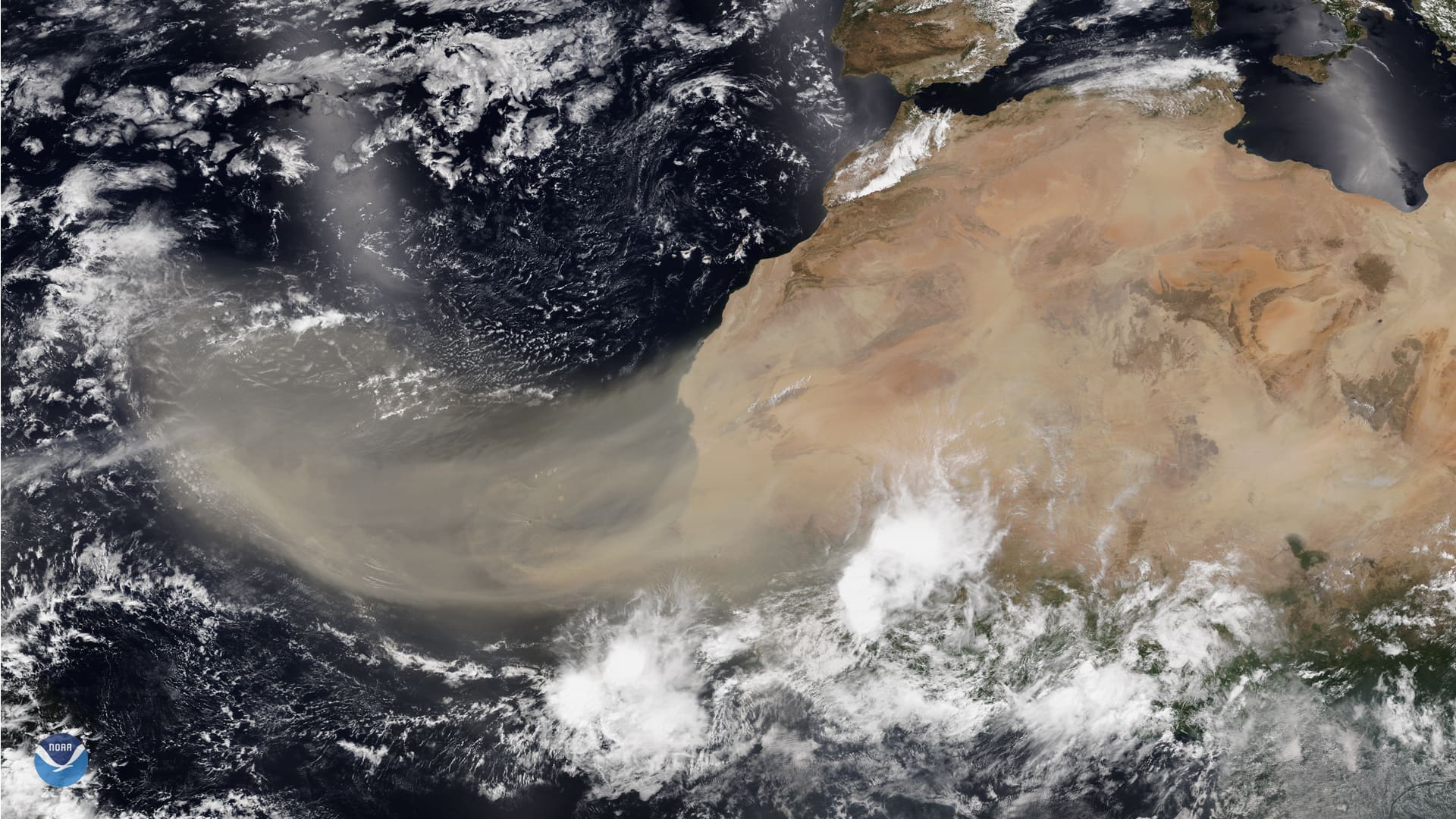The plumes of Saharan dust that visit the territory every summer apparently started a little earlier this year. Residents reported the familiar haze and grit showed up late last week but had cleared by Tuesday.

Walter Bostwick, a life-long St. Thomas resident familiar with the annual phenomenon, said this time, the dust seemed to appear without warning, filling the skies and blocking the view of nearby islands.
“It was a surprisingly quick build-up,” he said. “All of a sudden, you couldn’t see anything.” From the Drake Seat look-out, “you could barely see Tortola.” The usual 40-mile view was reduced to something more like four miles.
“It was a bit of grit,” he said. “You wake up in the morning and wipe the grit out of your eyes.”
In more severe cases, the dust can pose problems for people who have allergies or difficulty breathing.
Bostwick said he first noticed the dust on Thursday when it was “particularly obnoxious.” It was still in evidence on Sunday. “Then it rained (Monday) and kind of scrubbed it out.”
By early Tuesday afternoon, Bostwick reported the dust was gone. “It is just jaw-dropping beautiful right now.”
St. Croix may have been spared the worst of the dust.
“I didn’t see much of it over here,” said St. Croix resident Daisey Lafond, although she had noticed an intermittent haze. She said friends on St. Thomas had told her they were dealing with it, but she hadn’t heard similar complaints from anyone on St. Croix.
The National Oceanic and Atmospheric Administration announced last week that it was tracking a Sahara air layer as it made its way across the Atlantic towards the U.S. mainland.
Such layers are typically about two miles to two-and-a-half miles thick and ride about a mile above the Earth’s surface, according to the NOAA website. They form in northern Africa when tropical waves along the southern edge of the Sahara Desert kick up sand and dirt and send it up into the atmosphere. Then the dust heads west, pushed along by the tradewinds.
Saharan dust season generally gets going in mid-June and lasts until mid-August, according to NOAA. There can be outbreaks every three to five days. The dust temporarily blankets areas in the Caribbean and can travel as far west as Florida and, sometimes, even Texas.
As satellites and other modern instruments have allowed for the study and tracking of Sahara air layers, scientists have learned a lot about how they interact with other weather aspects.
Particularly significant for areas routinely affected by hurricanes and tropical storms is the fact that the warmth, dryness, and strong winds that characterize Sahara air layers act to suppress cyclone formation. As V.I. residents know from experience, storm chances generally increase dramatically in late August and September, which is after the dust layers have typically left the scene.





